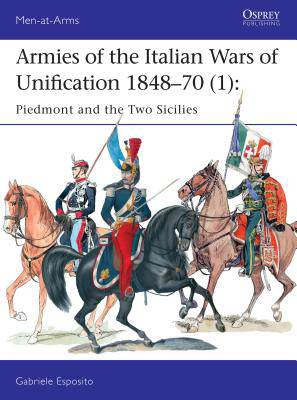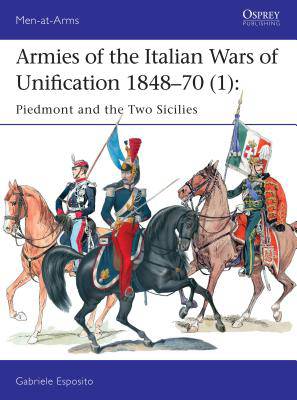
- Retrait gratuit dans votre magasin Club
- 7.000.000 titres dans notre catalogue
- Payer en toute sécurité
- Toujours un magasin près de chez vous
- Retrait gratuit dans votre magasin Club
- 7.000.0000 titres dans notre catalogue
- Payer en toute sécurité
- Toujours un magasin près de chez vous
Armies of the Italian Wars of Unification 1848-70 (1)
Piedmont and the Two Sicilies
Gabriele EspositoDescription
In the 1840s, post-Napoleonic Italy was 'a geographical expression'--not a country, but a patchwork of states. The north (Savoy/Piedmont, and Venice ) was ruled by Austria-Hungary, and most of the minor central states were more or less clients of Austria. From Naples, a Spanish-descended Bourbon monarchy ruled the south--'the Two Sicilies.' The European 'Year of Revolutions', 1848, saw popular uprisings against the regimes all over the peninsula. These were eventually crushed (First War of Independence, 1848-49); but they left King Victor Emmanuel of Savoy/Piedmont--and his able minister Cavour--determined to liberate and unify the country, while royal authority in the Two Sicilies was left deeply unpopular.
Savoy/Piedmont endeavored to strengthen the relationship with France and Britain, by sending troops to fight alongside them in the Crimean War, 1854-56 and, as a result, it was actively supported by a French army in the Second War of Independence (1859), when the battles of Magenta and Solferino freed most of the north from Austrian rule. In the south, Garibaldi's 'Redshirts' led a successful rising against the Kingdom of the Two Sicilies (1860). Eventually the south voted to join the north in a unified kingdom (February 1861); nevertheless, northern troops had to enforce this by a ruthless occupation during the 1860s--a little-known campaign.Spécifications
Parties prenantes
- Auteur(s) :
- Editeur:
Contenu
- Nombre de pages :
- 48
- Langue:
- Anglais
- Collection :
- Tome:
- n° 512
Caractéristiques
- EAN:
- 9781472819499
- Date de parution :
- 22-08-17
- Format:
- Livre broché
- Format numérique:
- Trade paperback (VS)
- Dimensions :
- 180 mm x 244 mm
- Poids :
- 158 g

Les avis
Nous publions uniquement les avis qui respectent les conditions requises. Consultez nos conditions pour les avis.






